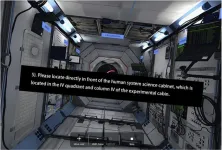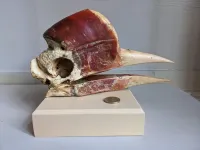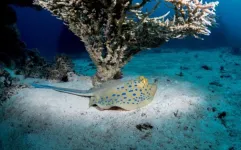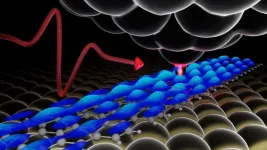(Press-News.org) A previously unknown mechanism by which proteins from the brain are carried to a particular group of sensory nerves causes migraine attacks, a new study shows. This may pave the way for new treatments for migraine and other types of headaches.
More than 800,000 Danes suffer from migraines – a condition characterised by severe headache in one side of the head. In around a fourth of all migraine patients, headache attacks are preceded by aura – symptoms from the brain such as temporary visual or sensory disturbances preceding the migraine attack by 5-60 minutes.
While we know with some certainty why patients experience aura, it has been a bit of a mystery why they get headaches, and why migraines are one-sided.
Till now. A new study in mice conducted by researchers at the University of Copenhagen, Rigshospitalet and Bispebjerg Hospital is the first to demonstrate that proteins released from the brain during migraine with aura are carried with cerebrospinal fluid to the pain-signalling nerves responsible for headaches.
“We have discovered that these proteins activate a group of sensory nerve cell bodies at the base of the skull, the so-called trigeminal ganglion, which can be described as a gateway to the peripheral sensory nervous system of the skull,” says Postdoc Martin Kaag Rasmussen from the Center for Translational Neuromedicine at the University of Copenhagen, who is first author of the study.
At the root of the trigeminal ganglion, the barrier that usually prevents substances from entering the peripheral nerves is missing, and this enables substances in the cerebrospinal fluid to enter and activate pain-signalling sensory nerves, resulting in headaches.
“Our results suggest that we have identified the primary channel of communication between the brain and the peripheral sensory nervous system. It is a previously unknown signalling pathway important for the development of migraine headache, and it might be associated with other headache diseases too,” says Professor Maiken Nedergaard, who is senior author of the study.
The peripheral nervous system consists of all the nerve fibres responsible for communication between the central nervous system – the brain and spinal cord – and the skin, organs and muscles. The sensory nervous system, which is part of the peripheral nervous system, is responsible for communicating information about e.g. touch, itching and pain to the brain.
The study results offer insight into why migraine is usually one-sided, which has been a mystery to scientists.
“Most patients experience one-sided headaches, and this signalling pathway can help explain why. Our study of how proteins from the brain are transported shows that the substances are not carried to the entire intracranial space, but primarily to the sensory system in the same side, which is what causes one-sided headaches,” says Martin Kaag Rasmussen.
The study was conducted on mice, but also included MR scans of the human trigeminal ganglion, and according to the scientists, there is every indication that the function of the signalling pathway is the same in mice and humans and that in humans too the proteins are carried by cerebrospinal fluid.
Proteins may lead to new treatment options
Using state-of-the-art techniques such as mass spectrometry, which can detect a broad selection of proteins in a given sample, the researchers analysed the cocktail of substances released during the aura stage of a migraine attack – that is, during the stage of visual disturbances.
“The concentration of 11 per cent of the 1,425 proteins we identified in the cerebrospinal fluid changed during migraine attacks. Of these, 12 proteins that had increased in concentration acted as transmitter substances capable of activating sensory nerves,” says Martin Kaag Rasmussen and adds:
“This means that when the proteins are released, they are carried to the trigeminal ganglion via the said signalling pathways, where they bind to a receptor of a pain-signalling sensory nerve, activating the nerve and triggering the migraine attack succeeding the aura symptoms.”
The group of proteins identified by the researchers included CGRP – a protein already associated with migraine and used in existing treatments. However, the researchers also discovered a series of other proteins, which may pave the way for new treatment options.
“We hope the proteins we identified – aside from CGRP – may be used in the design of new preventive treatments for patients that don’t respond to available CGRP antagonists. The next step for us is to identify the protein with the greatest potential,” says Martin Kaag Rasmussen.
He explains that one of the proteins identified is known to play a role in menstrual migraine.
“Initially, we hope to identify the proteins that trigger migraine phenotypes. We will then proceed to do provocation tests on humans in order to determine whether exposure to one of the identified proteins can trigger a migraine attack,” says Martin Kaag Rasmussen and adds:
“It is a good idea to test whether this and other proteins can trigger migraine attacks in humans, because if they can, they may be used as targets in treatment and prevention.”
END
Researchers identify unknown signalling pathway in the brain responsible for migraine with aura
2024-07-04
ELSE PRESS RELEASES FROM THIS DATE:
Music: Song melodies have become simpler since 1950
2024-07-04
The complexity of the melodies of the most popular songs each year in the USA — according to the Billboard year-end singles charts — has decreased since 1950, a study published in Scientific Reports suggests.
Madeline Hamilton and Marcus Pearce analysed the most prominent melodies (usually the vocal melody) of songs that reached the top five positions of the US Billboard year-end singles music charts each year between 1950 and 2022. They found that the complexity of song rhythms and pitch arrangements decreased over this period as the average number of notes ...
Effects of visual and auditory instructions on space station procedural tasks
2024-07-04
Firstly, the authors provided a detailed explanation of the experimental methods and procedures. This study recruited 30 healthy subjects (15 males and 15 females), aged between 20 to 50 years, with an average age of 42 ± 6.58 years. All participants had no severe visual or auditory impairments and were right-handed. The subjects met the biometric standards for astronaut candidates and were rigorously screened. The experiment used Unity 3D to model the space station, simulating the internal scenes of the space station. The subjects started from the core node module and found the laboratory module I, where they operated the Space Raman Spectrometer ...
Norway can lead the fight against plastic pollution
2024-07-04
Plastic items from around the world are continuously washing ashore on Norwegian coastlines. This reflects a much larger systemic issue facing the nations of the world.
Scientists have long reported the consequences of plastic pollution and the urgent need for intervention, but global plastic production and consumption continue to rise.
This underscores the importance of Norway’s advocacy for a global agreement that guarantees stopping the flow of plastics into the environment.
But Norway also has a responsibility in generating plastic pollution.
In a study conducted ...
Decolonizing the Tropical Ecology curriculum
2024-07-04
A new study of curriculum reading material at the University of Glasgow finds that 94% of recommended Tropical Ecology authors are white, and that 80% of authors are affiliated with universities outside of the tropics. Dr Stewart White, Senior Lecturer at the School of Biodiversity, One Health and Veterinary Medicine at the University of Glasgow, UK, intends to change that.
“Tropical rainforest research was long the preserve of rich white men and the resulting literature was the same,” says Dr White. “This historical bias in tropical research and publication is still ...
Exploring the casque anatomy of aerial jousting helmeted hornbills
2024-07-04
New research reveals how the surprising internal anatomy of the helmeted hornbill’s casque allows it to withstand damage during aerial jousting battles with rivals. Researchers hope that this new understanding can help to conserve this critically endangered species, as well as provide new insights into developing impact-resistant bio-mimetic materials.
“When I started in Hong Kong, I visited City University of Hong Kong (HKU)’s conservation forensics group to chat about their research and they introduced me to this amazing bird, to its ...
A New Blue: Mysterious origin of the ribbontail ray’s electric blue spots revealed
2024-07-04
Researchers have discovered the unique nanostructures responsible for the electric blue spots of the bluespotted ribbontail ray (Taeniura lymma), with possible applications for developing chemical-free colouration. The team are also conducting ongoing research into the equally enigmatic blue colouration of the blue shark (Prionace glauca).
Skin colouration plays a key role in organismal communication, providing life-critical visual clues that can warn, attract or camouflage. Bluespotted ribbontail ...
Cool roofs are best at beating cities’ heat
2024-07-04
Painting roofs white or covering them with a reflective coating would be more effective at cooling cities like London than vegetation-covered “green roofs,” street-level vegetation or solar panels, finds a new study led by UCL researchers.
Conversely, extensive use of air conditioning would warm the outside environment by as much as 1 degree C in London’s dense city centre, the researchers found.
The research, published in Geophysical Research Letters, used a three-dimensional urban climate model of Greater London to test the thermal effects of different passive and active urban heat management systems, including painted “cool roofs,” rooftop solar panels, ...
Single atoms show their true color
2024-07-04
One of the challenges of cramming smarter and more powerful electronics into ever-shrinking devices is developing the tools and techniques to analyze the materials that make them up with increasingly intimate precision.
Physicists at Michigan State University have taken a long-awaited step on that front with an approach that combines high-resolution microscopy with ultrafast lasers.
The technique, described in the journal Nature Photonics, enables researchers to spot misfit atoms in semiconductors with unparalleled precision. Semiconductor physics labels these atoms as “defects,” which sounds negative, but they’re ...
Re-engineering cancerous tumors to self-destruct and kill drug-resistant cells
2024-07-04
UNIVERSITY PARK, Pa. — Treating cancer can sometimes feel like a game of Whac-A-Mole. The disease can become resistant to treatment, and clinicians never know when, where and what resistance might emerge, leaving them one step behind. But a team led by Penn State researchers has found a way to reprogram disease evolution and design tumors that are easier to treat.
They created a modular genetic circuit that turns cancer cells into a “Trojan horse,” causing them to self-destruct and kill nearby drug-resistant ...
Reversing chemotherapy resistance in pancreatic cancer
2024-07-04
Pancreatic cancer is a particularly aggressive and difficult-to-treat cancer, in part because it is often resistant to chemotherapy. Now, researchers at Stanford have revealed that this resistance is related to both the physical stiffness of the tissue around the cancerous cells and the chemical makeup of that tissue. Their work, published on July 4 in Nature Materials, shows that this resistance can be reversed and reveals potential targets for new pancreatic cancer treatments.
“We found that stiffer tissue can cause pancreatic cancer cells to become resistant to chemotherapy, while softer tissue made ...




